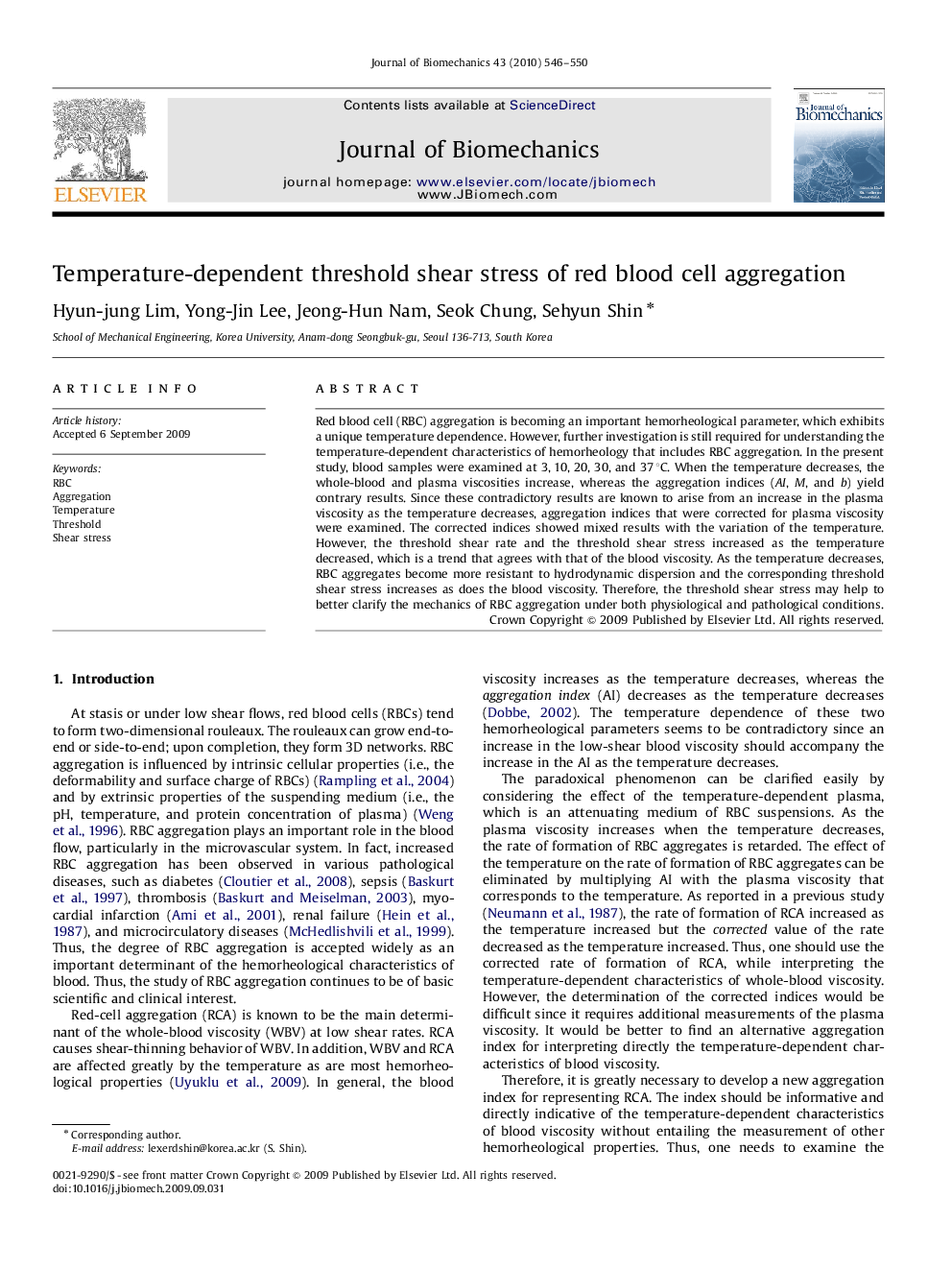| Article ID | Journal | Published Year | Pages | File Type |
|---|---|---|---|---|
| 872739 | Journal of Biomechanics | 2010 | 5 Pages |
Red blood cell (RBC) aggregation is becoming an important hemorheological parameter, which exhibits a unique temperature dependence. However, further investigation is still required for understanding the temperature-dependent characteristics of hemorheology that includes RBC aggregation. In the present study, blood samples were examined at 3, 10, 20, 30, and 37 °C. When the temperature decreases, the whole-blood and plasma viscosities increase, whereas the aggregation indices (AI, M, and b) yield contrary results. Since these contradictory results are known to arise from an increase in the plasma viscosity as the temperature decreases, aggregation indices that were corrected for plasma viscosity were examined. The corrected indices showed mixed results with the variation of the temperature. However, the threshold shear rate and the threshold shear stress increased as the temperature decreased, which is a trend that agrees with that of the blood viscosity. As the temperature decreases, RBC aggregates become more resistant to hydrodynamic dispersion and the corresponding threshold shear stress increases as does the blood viscosity. Therefore, the threshold shear stress may help to better clarify the mechanics of RBC aggregation under both physiological and pathological conditions.
